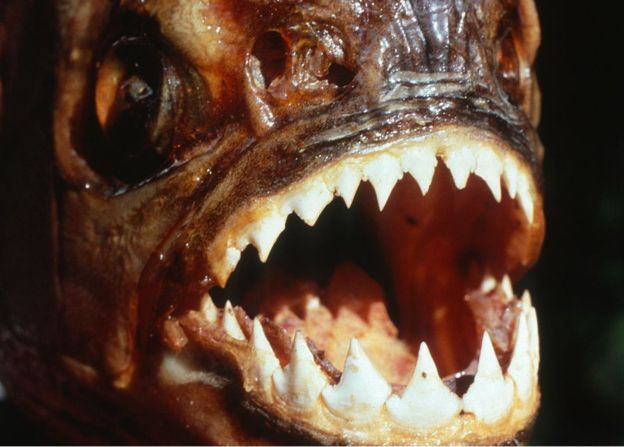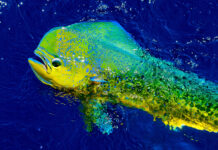Long ago in Jurassic seas, a devious new fish emerged. It belonged to a group called the pycnodontids, but it looked very different from the others. While its relatives had round, cobble-shaped teeth for slurping out the insides of hard-shelled prey, the new fish had long, pointed dagger-shaped teeth with serrated edges. This fish was a flesh chomper, write scientists in Current Biology, and it brilliantly ensured it always had meat to eat.
Its jaw, scientists explain in the study released Thursday, wasn’t designed to crush but to cut. The ancient fossils of this newly identified species, Piranhamesodon pinnatomus, were discovered in South German limestone deposits, along with its victims: other fish that had been nibbled on in the deep, around 150 million years ago. Curious bite patterns on the victims suggested that they were a renewable source of meat for the bloodthirsty fish.
Study co-author Martina Kölbl-Ebert, Ph.D., who wrote the paper along with colleagues from James Cook University in Australia, says the discovery was surprising, given what scientists knew about the meat-eating habits of Jurassic fish.
“We were stunned that this fish had piranha-like teeth,” Kölbl-Ebert said. “It is like finding a sheep with a snarl like a wolf.”
The new fossil represents the earliest record of a bony, marine fish that lived off other fish. Previously, scientists believed that bony fishes either fed on invertebrates or swallowed prey down whole during the Jurassic era. Now they know at least some of these ancient reef fish were up to something bloodier.
“When dinosaurs were walking the earth and small dinosaurs were trying to fly with the pterosaurs, fish were swimming around their feet tearing the fins or flesh off each other,” co-author David Bellwood, Ph.D. says.
A computer analysis of the specimen, seen in the video below, revealed a jaw morphology, shape, and tooth pattern consistent with slicing flesh or fins. The bite marks left on its victims, also found fossilized nearby, suggested a preference for the latter — and for a very good reason.
Fossilized fish found in the same deposit had chunks missing from their fins. The team believes these missing chunks indicate a clever hunting practice used by P. pinnatomus: They theorize that it fed predominantly on the fins of other fish instead of their flesh, because fins regrow — thus ensuring a renewable source of food.








